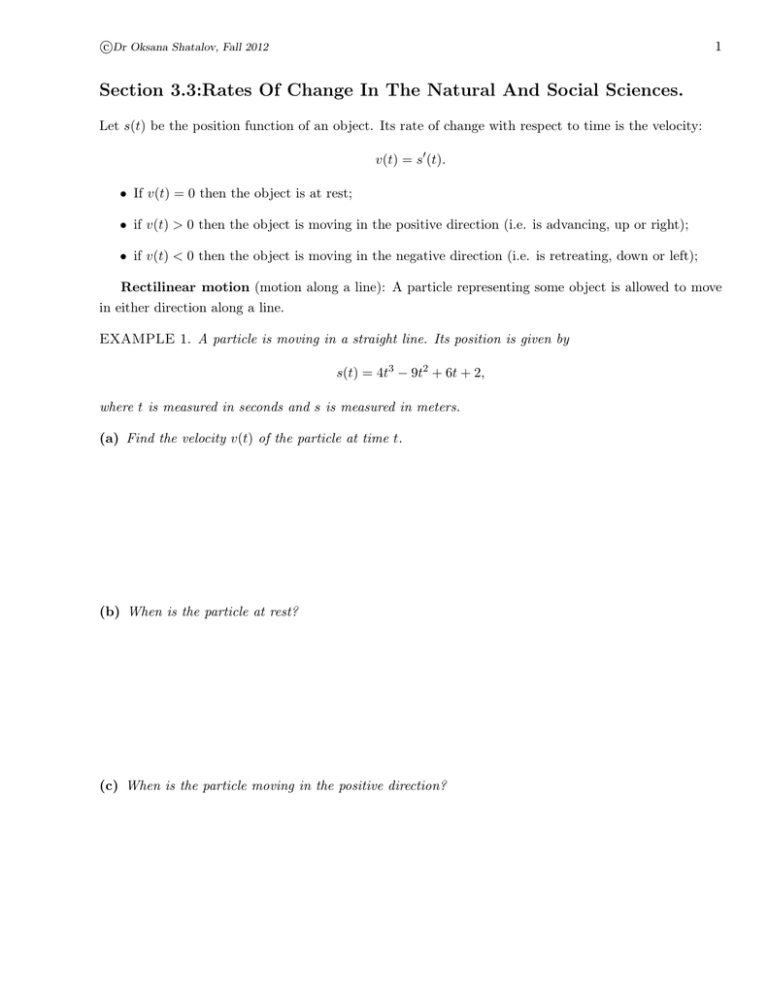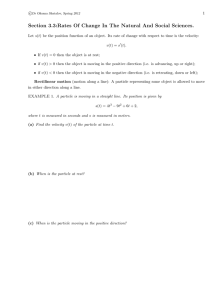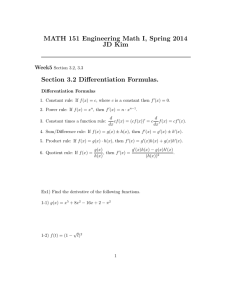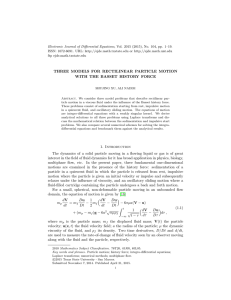Document 10581546
advertisement

c Dr Oksana Shatalov, Fall 2012 1 Section 3.3:Rates Of Change In The Natural And Social Sciences. Let s(t) be the position function of an object. Its rate of change with respect to time is the velocity: v(t) = s0 (t). • If v(t) = 0 then the object is at rest; • if v(t) > 0 then the object is moving in the positive direction (i.e. is advancing, up or right); • if v(t) < 0 then the object is moving in the negative direction (i.e. is retreating, down or left); Rectilinear motion (motion along a line): A particle representing some object is allowed to move in either direction along a line. EXAMPLE 1. A particle is moving in a straight line. Its position is given by s(t) = 4t3 − 9t2 + 6t + 2, where t is measured in seconds and s is measured in meters. (a) Find the velocity v(t) of the particle at time t. (b) When is the particle at rest? (c) When is the particle moving in the positive direction? c Dr Oksana Shatalov, Fall 2012 2 (d) Draw a diagram to represent the motion of the particle. (e) Find the total distance the particle traveled during the first three seconds. (Hint:Calculate each distance between turns and then add to get the total.) EXAMPLE 2. A ball is thrown vertically upward. Its height after t seconds is given by s(t) = 80t − 16t2 . What is the maximum height reached by the ball?










